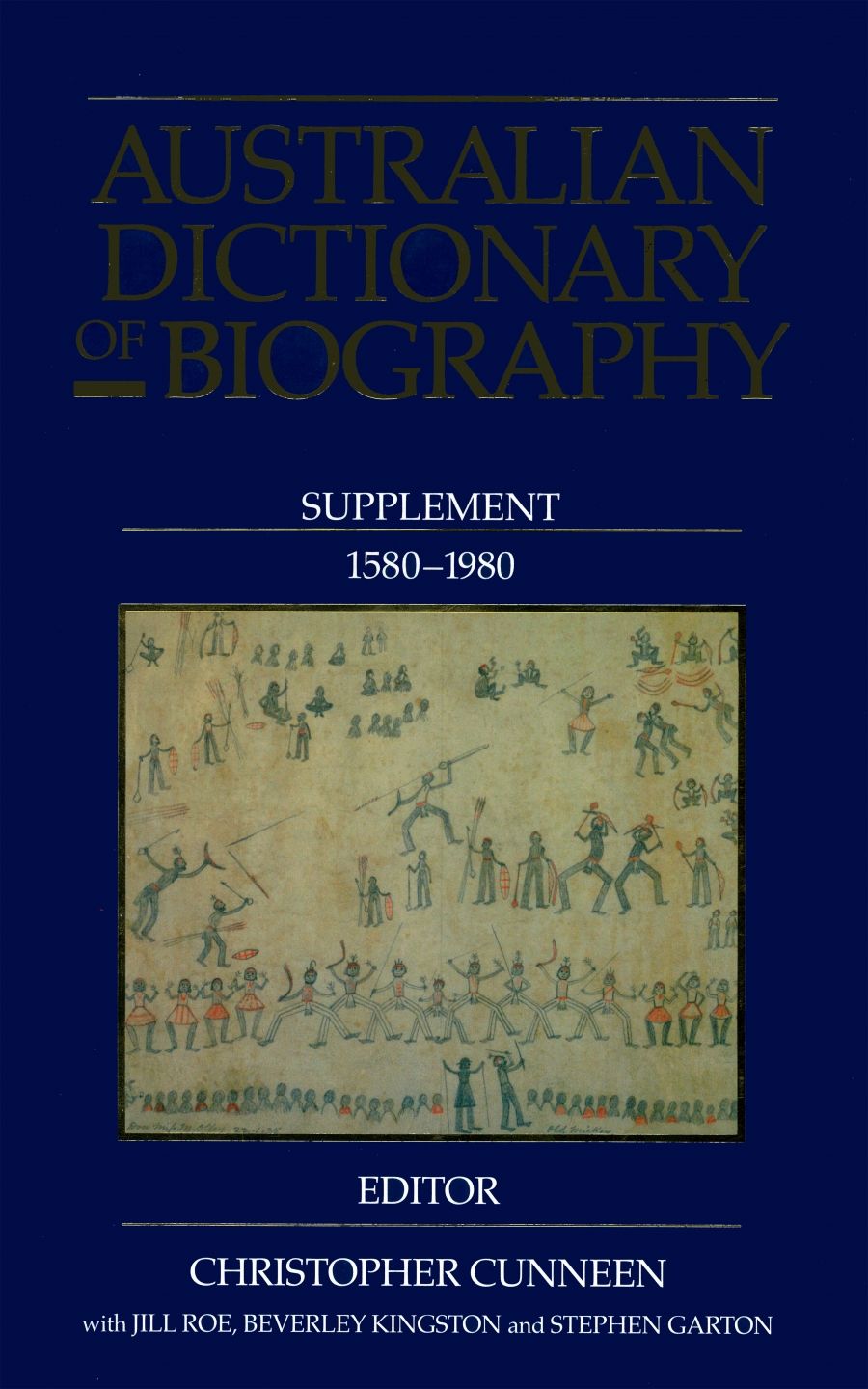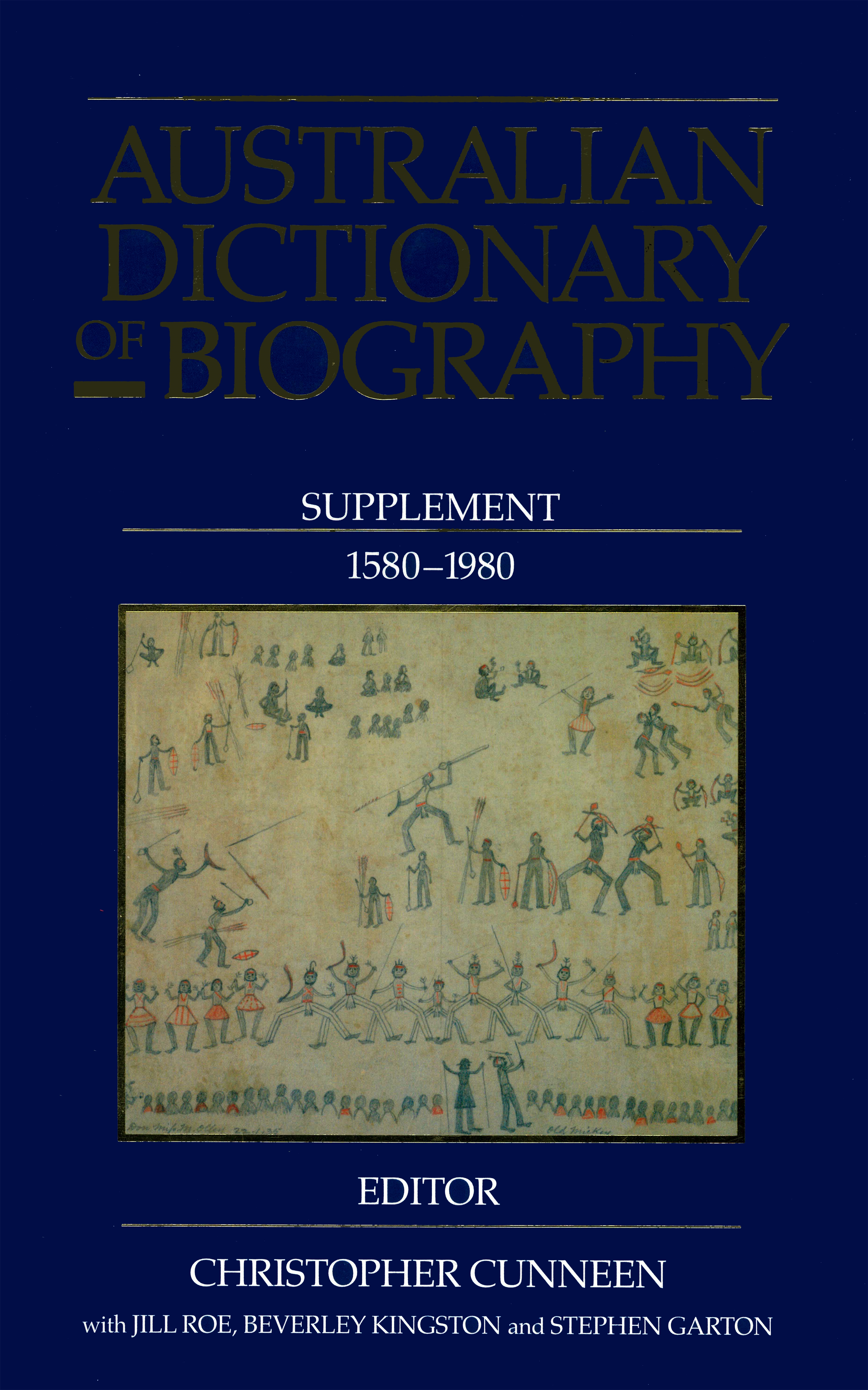
- Free Article: No
- Contents Category: Reference
- Review Article: Yes
- Article Title: Mysterious quotas
- Online Only: No
- Custom Highlight Text:
The first volume of the Australian Dictionary of Biography appeared in 1966, the sixteenth in 2002, by which stage the series included persons who had died prior to 1981. This one-volume Supplement includes those who were for one reason or another omitted from the main volumes. It is an impressive achievement. There are 504 biographies, written by 399 authors. Almost all are well written and carefully researched, with up-to-date lists of sources. The editor and his associates have had the Herculean task of melding all these biographies into a work of reference in which the entries have a consistency in the type of information presented, while at the same time allowing for the individuality of each subject and author. In this, they have succeeded admirably. The volume has the air of authority.
- Book 1 Title: Australian Dictionary of Biography
- Book 1 Subtitle: Supplement, 1580–1980
- Book 1 Biblio: MUP, $74.95 hb, 552 pp
- Book 1 Cover Small (400 x 600):

- Book 1 Cover (800 x 1200):

Reading this volume, which covers such a sweep of Australian history, is akin to reading a short history of Australia, but more enthralling because it is told from the personal perspective. The volume teems with life and is an illuminating and engrossing gallimaufry. Judges and captains of industry jostle with brothel owners and fortune-tellers; clergyman and sanitary carters vie for attention with cross-dressers and costumiers; trade unionists and philanthropic ladies and poets and pastoralists, Aboriginal resistance leaders and artists all clamour to be heard.
At long last, the national biographical dictionary recognises as significant a number of the founders of Australian businesses whose names were, and sometimes still are, household words, even if their companies have long been taken over by multinationals. Among these are: Alfred Allen (1870–1925), confectioner (Allen’s Irish Moss); James Boag (c.1822–90), brewer; Joseph Coffill (1841–1919), funeral director; Sir George Davis (1883–1947), gelatine manufacturer; Thomas Guest (1830–1908), biscuit manufacturer; James Hardie (1851–1920), businessman, probably now forever associated with asbestos; John Kitchen (1835–1922), who gave us, among other things, Solvol; Frederick Metters (1858–1937), stove manufacturer; Valentine Morgan (1876?–1952), publicist, who, as Val Morgan, appears on our cinema screens to this day before the main feature; and Edwin Street (1891–1975), ice cream manufacturer. Why these were omitted in the first place is a mystery, as none was obscure. It is also a great pleasure to see Richard Smith (1837–1919), the inventor of the stump-jump plough. What could be more Australian than that!
I have the impression, though I may be doing the ADB an injustice, that some of those included are there because their lives are the fashionable research topic of the hour and their authors, having already done the research, are keen for their boys or girls to get an ADB guernsey. There are, for example, a lot of nurses. If one is ill this may be a good thing, but it may be overkill in a biographical dictionary. While they were all clearly worthy, conscientious, and necessary, perhaps this is not sufficient for inclusion in a national work. The most interesting thing about Theodora Maud Sweetapple (1872–1972), for example, is her name – and perhaps the fact she lived to be one hundred.
The Dictionary proudly proclaims that it extends from 1580 to 1980. Dirk Hartog (1580–1621) provides the commencement date. It is stated that Hartog was ‘previously considered outside the criteria’. I find this puzzling. Hartog, as all Australians of my generation know, left a pewter plate on the Western Australian coast, at the island which now bears his name, in 1616. He charted part of that coast, and it was a significant discovery. As Abel Tasman, another Dutchman, who also charted part of Australia in the 1640s, and Willem Jansz, who charted part of Cape York in 1606, made it into the main sequence, by what possible criteria could Hartog be excluded? Please explain.
What are the criteria for inclusion? The ADB has never been precise about this. In its previously published volumes, it has stated that those ‘obviously significant’ are included, and also those who would serve as ‘representatives’ of certain groups, and it has also allowed for the odd ‘notorieties or eccentrics’. It also mentions ‘quotas’ but without defining what these quotas might be.
All the entries in this volume are relatively short compared to the main work. The editor seems confused about the reason for this. He states that: ‘[b]ecause its focus is on identifying notable Australians worthy of addition to the current published series, it does not attempt to cover a broad cross-section of society, as do other volumes.’
He goes on to say, ‘the entries here focus on Australians of significance previously missed, regardless of their representativeness’, and follows this with the non sequitur ‘[t]his also explains the lack of long entries’. It is almost as if this volume were seen as the B-list. By implication, the editor says as much in the next sentences:
Early volumes have provided a comprehensive and authoritative coverage of the most notable Australians, from prime ministers to criminals: politicians, for example, warranted substantial entries of up to 6000 words. Here, the largest entries are just more than 1000 words; the smallest is 426 words.
Some of the entries bear the mark of severe pruning in order to reduce the word length. Sometimes this has comical results; for example, in the biography of Robert Ewing (c.1823–99), minister of religion and controversialist: ‘In a dispute with the Hobart lodge that year he was accused of abandoning his wife. He was elected moderator of the Presbyterian Church in 1863.’ We presume the one did not lead to the other; now that would have been controversial.
Perhaps because of the unexplained ‘quotas’, a number of biographies are of those whom I humbly submit really should not be in a national work. Fewer of these would have provided more space for those of more significance. For example, Hannah Rigby (c.1794–1853), embroiderer, servant and convict, like the House of Lords, did nothing in particular, and did it very well. There are others who, while of some note, are big fish in very small ponds. More space could also be provided for the more significant by cutting others down. Mary Griffith (1849–1930) and Paquita Mawson (1891–1974), respectively the sister of Sir Samuel Griffith and the wife of Sir Douglas Mawson, when all is said and done are there because of those connections. They did good work, but nothing that has not been duplicated by other wealthy sisters and wives of famous men. Yet these two are each given about the same space as Ann Howe (c.1802–42), the proprietor of the Sydney Gazette from 1829 to 1836. Has there ever been a female newspaper proprietor in Australia of such influence? And Thomas Guest, our biscuit manufacturer, is allotted even less space.
The ‘I’s have it, or at least provide a brief overview of the problem, as there are only two of them. The entry for William Inglis (1832–96), auctioneer and stock agent, also serves to record the lives of his son and grandson, all of whom were significant in the family firm, which was a major company with an Australia-wide reach. The other entry is for Tasmanian Alice Irvine (1879–1940). She is allotted about the same space as all the Inglises. Her one claim to fame is her cookery book of 1930, which became a standard Tasmanian text. Could we not cut the latter and enlarge the former?
‘Significance’ is subjective. It is, though, a question of balance. This volume is a major achievement, and practically all the biographies are worth reading. But in a national work, if justice is to be done to the lives of the nationally significant, then those of more parochial influence must either be omitted or briefly noted. Tighter editing, and more exact criteria for inclusion, would have improved what is nonetheless an outstanding contribution to our reference shelves.


Comments powered by CComment